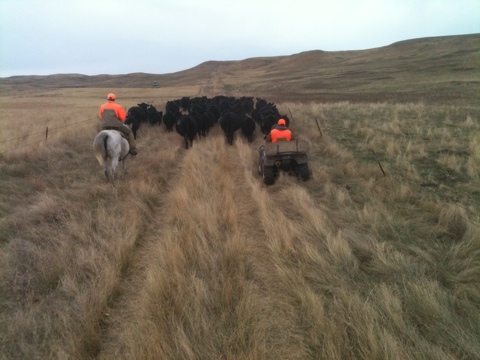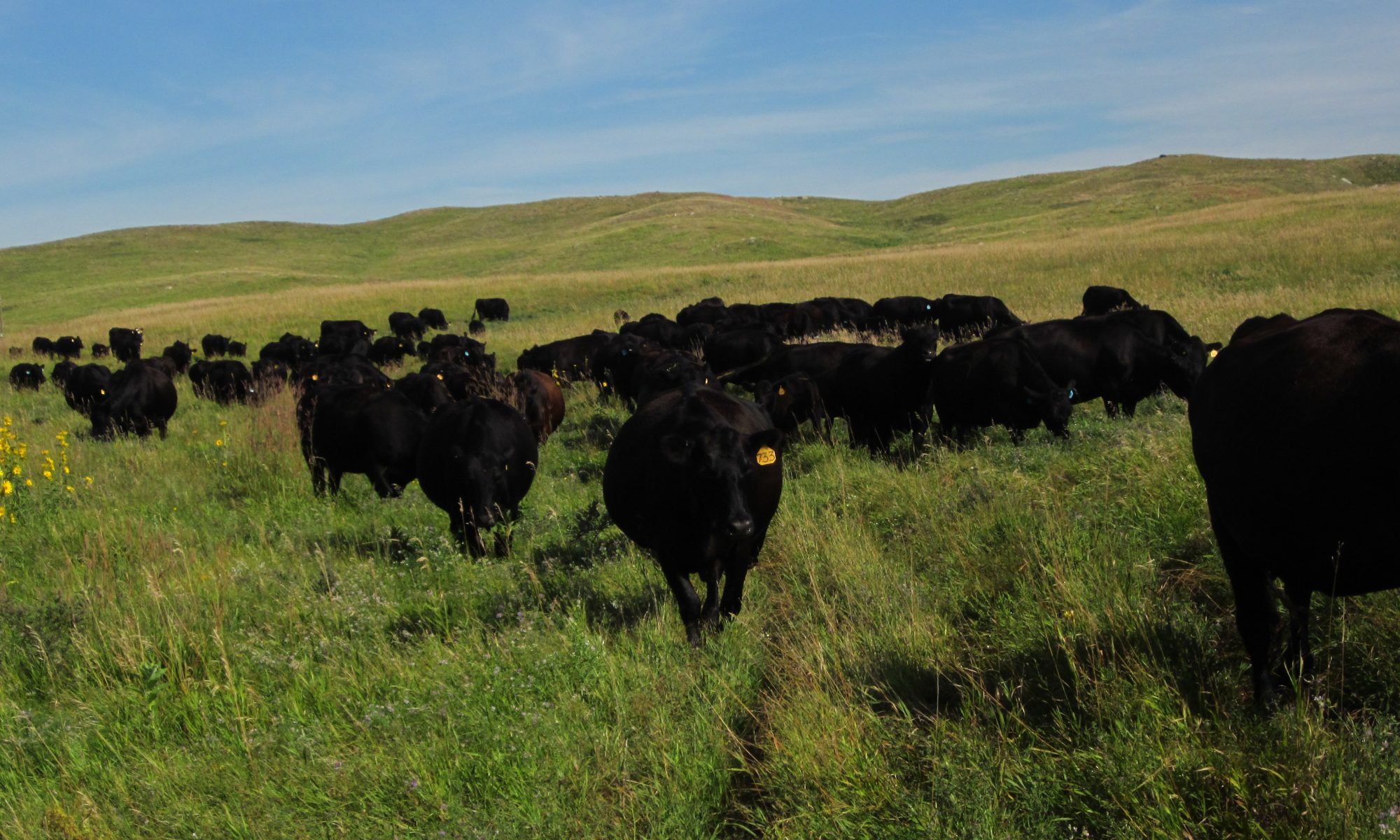Just a quick update for now…trying out the WordPress app on my phone so we'll see how it turns out. It looks like we'll have a brown Christmas for the first year in recent memory. We had a couple inches on the ground earlier this month but it has all but melted. The nice weather allowed us to get almost caught up on fencing projects. I say almost because there is ALWAYS more fence to build! Having a post hole digger on the skid loader makes easy work digging through the ten inches or so of frost. The cows are happy grazing wheat and corn stubble, and I'm even happier not having to start the tractor every morning to feed them. Letting them feed themselves saves close to 40% on feed costs. The hunting has slowed down considerably since the last update. Not necessarily due to a lack of birds however. They are just a lot smarter now. The birds I mean. Can't speak for the hunters. The roosters that survive this long have learned a thing or two and can be tough to get around. The best luck lately has been walking fence lines and field borders adjacent to corn stubble. We again enjoyed spending time with our hunters this fall. We truly look forward to catching up with each group that comes out. Thank you to those who come back each season. We really appreciate your friendship and business. We're looking forward to the upcoming holidays. Spending time with family is always something we get excited about. Chris and Kajsa will be coming up with Jake, so Grandpa and Grandma will be excited to have all three grandkids around for the week. The most exciting thing for us was also the most exciting thing for the shepherds in that field that first Christmas. It's just incredible to think how the course of history changed one night, two thousand years ago, when a Baby was born. It is amazing to go out on a crisp winter night and wonder what it might have been like for those shepherds. A night like a thousand others, yet turned out to be the most pivotal night in history! "O little town of Bethlehem, how still we see thee lie! Above thy deep and dreamless sleep the silent stars go by. Yet in thy dark streets shineth the everlasting Light; The hopes and fears of all the years are met in thee tonight!"
Hired Guns
The first of the fall shots
A sure sign that summer is ending is fall shots. You're probably imagining men in orange shooting at birds, but I'm talking about something else entirely. "Fall shots" to us means bringing the cattle home to give the calves boosters of the vaccinations they were given this spring.
(Just a note – the explanation for each picture is above the photo.)
The cattle have been out on summer pastures since May. Naomi and I moved the herd to a pasture closer to the corrals the day before we worked them. "Working" cattle is a catch-all term for sorting, giving shots, castrating, pregnancy testing, and so on. This time, it's just the fall shots. These vaccinations guard the calves against roughly 15 diseases.
There were 240 pairs in the herd, which means 480 cattle all together. A "pair" refers to a mother cow and her calf. You may imagine a dusty, thundering herd of cattle stampeding down the valley with Naomi and I whooping and hollering behind them, but it was quite the opposite. We try to keep the herd as quiet and calm as possible. Being outnumbered 480 to two, we can't expect to out-muscle them! Once they understood it was time to move home, they strung out and moseyed their way down the hills. Naomi led them with a bucket of cake (doggie treats for cows) until they started through the last gate.
They're good at follow the leader! Just about home…
After getting the herd moved home, we sorted the bulls out. They had been with the cows since July 2. By only allowing the bulls to be with the cows for 60 days, we can manage when the calves are born. This allows for a more uniform group of calves in the fall when we wean them. By keeping them relatively the same age, we can better manage their diet over the winter. Back to the bulls for a minute…we kept between nine and 11 bulls with these cows over the 60-day breeding season. This means each bull is responsible for breeding about 24 cows, although that number varies.
The next day, we began gathering the cattle shortly after dawn. This time of year can still get pretty warm, so we try to get all the cattle work done while the temps are comfortable for both man and beast. After moving them into the corral, we sorted the cows from the calves. The calves were directed through the tub and alley into the chute. It was my job to fill the alley.
The design of the tub and alley was made popular by Temple Grandin, a world-renowned cattle handling expert. The solid walls prevent the cattle from being spooked by things outside the pen. It also makes it easier for them to find the way out. The curved alley helps the cattle to keep moving, as their natural instinct is to go around things.
After getting their shots, the calves are returned to their mothers. If you look close, you'll see green in the ears of some calves. This is tattoo ink. The heifer (female) calves are vaccinated against brucellosis. As proof of this vaccination, a special tag and tattoo are given that identify the year it was given.
After a couple hours, the cows and calves were pretty well paired up. This is always a miracle to me. How on earth a cow can pick her calf out of 239 others simply by smell is inexplicable. We opened the gate and the cattle moved back out to pasture. The next time they come home will be early November. We'll be weaning the calves at that time.
If you have any questions, just leave a comment and I'll get back to you!
-Luke







